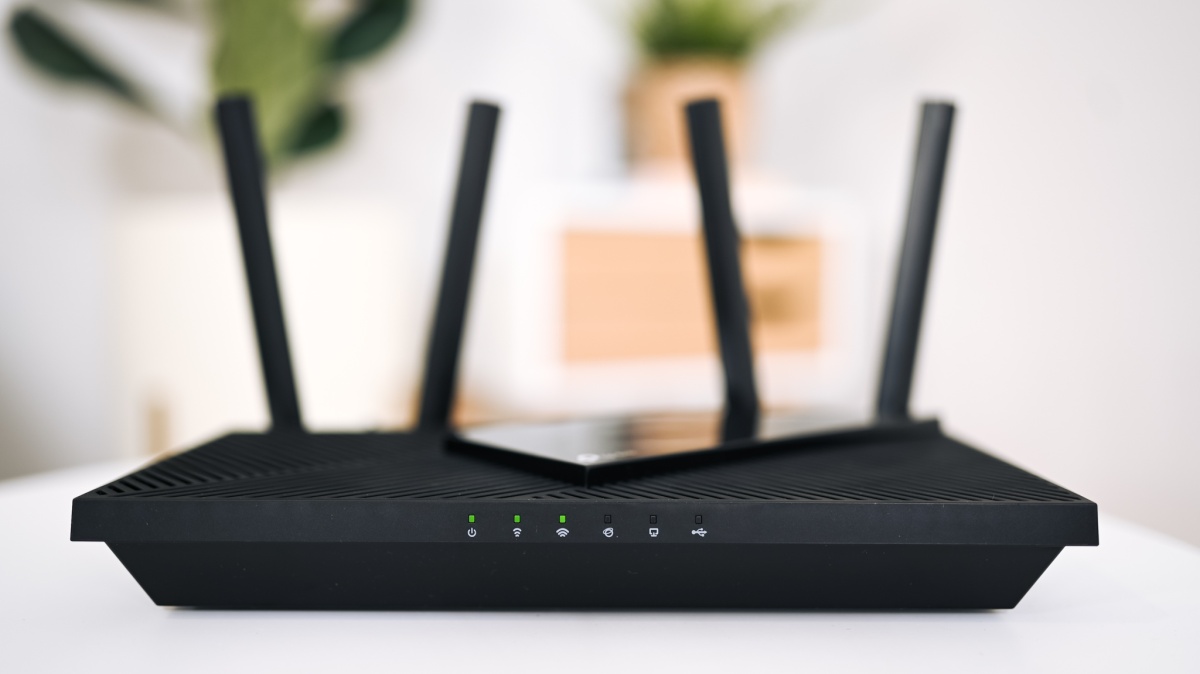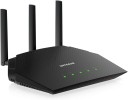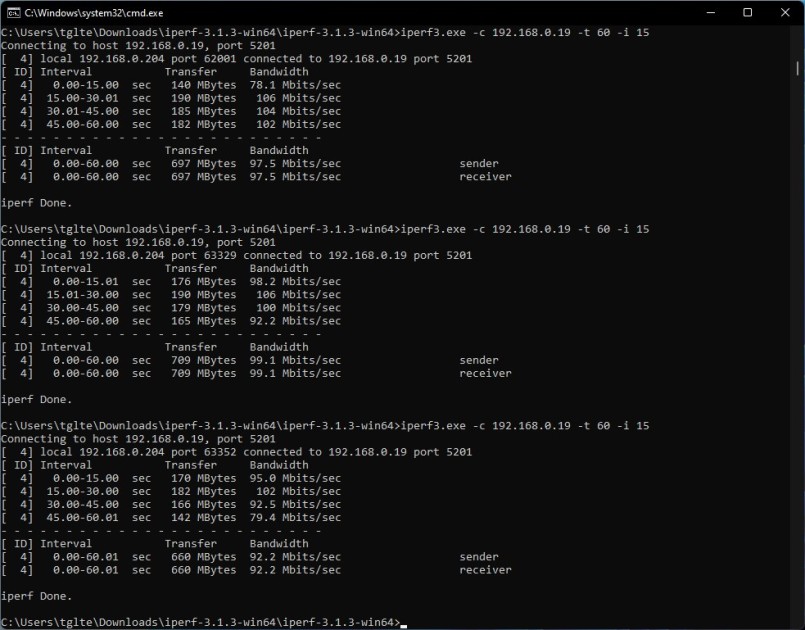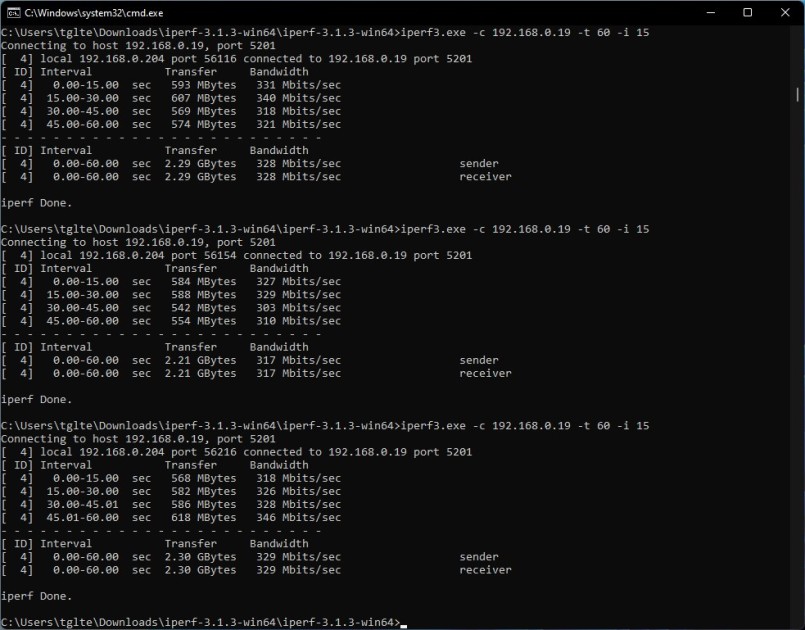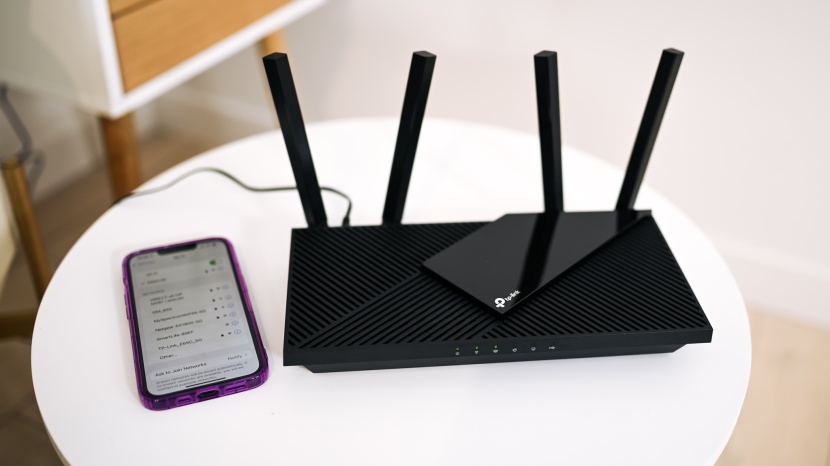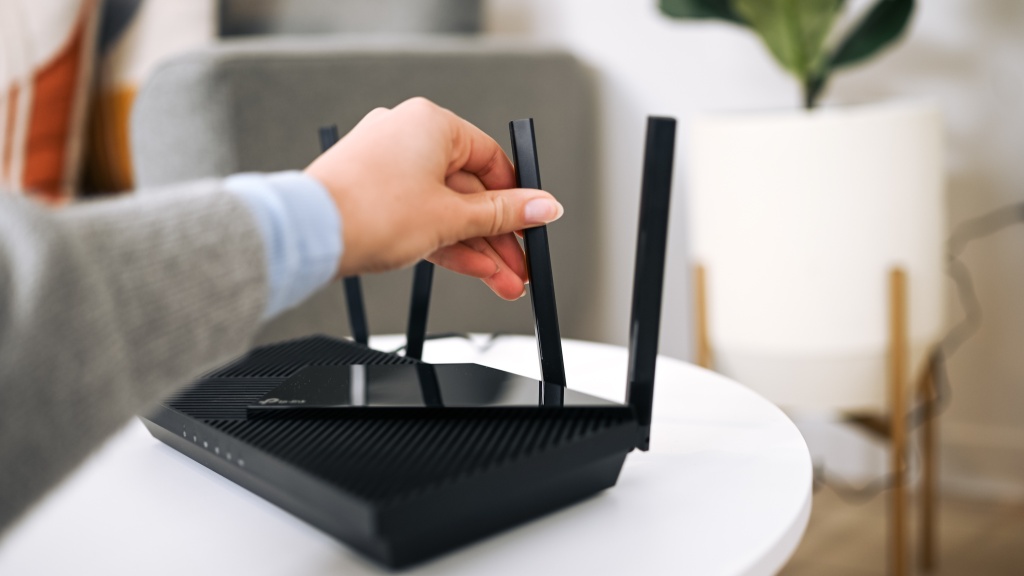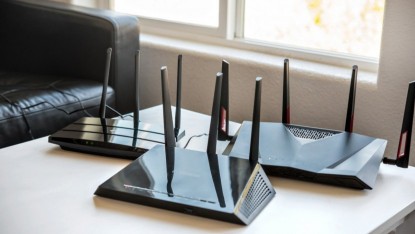Our Verdict
Compare to Similar Products
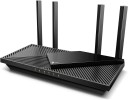 This Product TP-Link Archer AX55 (AX3000) | |||||
|---|---|---|---|---|---|
| Awards | Best Bang for your Buck | Best on a Tight Budget | |||
| Price | $130 List $71.99 at Amazon | $150 List | $120 List $69.99 at Amazon | $100 List $59.99 at Amazon | $90 List $69.99 at Amazon |
Overall Score  |
|||||
| Star Rating | |||||
| Bottom Line | A good router overall, and it isn't too expensive | This middling router is great for those who don't want to break the bank | This average router is meant for those in small households | This middling router doesn't offer a good enough performance to justify its high price | This model has some of the lowest throughput speeds from a WiFi 6 router |
| Rating Categories | TP-Link Archer AX55... | Netgear RAX20 (AX1800) | Netgear Nighthawk R... | TP-Link Archer AX21... | ASUS RT-AX1800S (AX... |
| 2.4 GHz Throughput (35%) | |||||
| 5 GHz Throughput (35%) | |||||
| Range (20%) | |||||
| Ease of Use (10%) | |||||
| Specifications | TP-Link Archer AX55... | Netgear RAX20 (AX1800) | Netgear Nighthawk R... | TP-Link Archer AX21... | ASUS RT-AX1800S (AX... |
| WiFi Version | WiFi 6 | WiFi 6 | WiFi 6 | WiFi 6 | WiFi 6 |
| Wireless Specification | Dual Band | Dual Band | Dual Band | Dual Band | Dual Band |
| Frequency | 5 GHz 2.4 GHz |
5 GHz 2.4 GHz |
5 GHz 2.4 GHz |
5 GHz 2.4 GHz |
5 GHz 2.4 GHz |
| Processor | Dual-Core | 1.5GHz Quad-core | 1.5GHz Quad-core | 1.5GHz Quad-core | Dual-core (4 VPE) |
| Memory | 512 MB RAM | 256 MB flash 512 MB RAM |
256 MB flash 512 MB RAM |
16 MB flash 256 MB RAM |
128 MB flash 256 MB RAM |
| MU-MIMO | Yes | Yes | Yes | Yes | Yes |
| OFDMA | Yes | Yes | Yes | Yes | Yes |
| Beamforming | Explicit only | Implicit Explicit |
Implicit Explicit |
Explicit only | Implicit Explicit |
| Security | WPA/WPA2/WPA3 - Personal WPA/WPA2 - Enterprise |
WPA/WPA2/WPA3 - Personal WPA/WPA2 - Enterprise |
WPA/WPA2/WPA3 - Personal WPA/WPA2 - Enterprise |
WPA/WPA2/WPA3 - Personal WPA/WPA2 - Enterprise |
WPA/WPA2/WPA3 - Personal WPA/WPA2 - Enterprise |
| LAN Ports Available | 4 | 4 | 4 | 4 | 4 |
| USB Ports | 1 USB-A 3.0 |
1 USB-A 3.0 |
None | 1 USB-A 2.0 |
None |
| Antenna | 4 | 2 | 3 | 4 | 4 |
| Wall Mountable | Yes | Yes | Yes | Yes | Yes |
| Wireless On/off button | Yes | No | No | Yes | No |
| Led on/off | No | No | No | Yes | No |
| 2.4 GHz 9 ft Unobstructed | 94 Mbps | 100 Mbps | 100 Mbps | 110 Mbps | 90 Mbps |
| 2.4 GHz 9 ft Obstructed | 107 Mbps | 90 Mbps | 83 Mbps | 101 Mbps | 91 Mbps |
| 2.4 GHz 35 ft Unobstructed | 115 Mbps | 82 Mbps | 66 Mbps | 84 Mbps | 82 Mbps |
| 2.4 GHz 35 ft Obstructed | 96 Mbps | 70 Mbps | 72 Mbps | 72 Mbps | 61 Mbps |
| 2.4 GHz 70 ft Obstructed | 23 Mbps | 21 Mbps | 21 Mbps | 27 Mbps | 12 Mbps |
| 5.0 GHz 9 ft Unobstructed | 345 Mbps | 364 Mbps | 343 Mbps | 317 Mbps | 305 Mbps |
| 5.0 GHz 9 ft Obstructed | 342 Mbps | 363 Mbps | 354 Mbps | 323 Mbps | 303 Mbps |
| 5.0 GHz 35 ft Unobstructed | 332 Mbps | 328 Mbps | 342 Mbps | 325 Mbps | 299 Mbps |
| 5.0 GHz 35 ft Obstructed | 325 Mbps | 310 Mbps | 328 Mbps | 319 Mbps | 277 Mbps |
| 5.0 GHz 70 ft Obstructed | 90 Mbps | 71 Mbps | 56 Mbps | 83 Mbps | 72 Mbps |
Our Analysis and Test Results
The TP-Link Archer AX55 did quite well across many test metrics, earning scores that placed it ahead of the majority of models we tested. See how this model did in our testing and scoring below.
2.4 GHz Throughput
2.4 GHz may not be the modern bandwidth of choice, but many devices still require it, and the Archer AX55 does a better job than any other model tested when it comes to providing 2.4GHz throughput.
In our series of both unobstructed and obstructed tests, with ranges from 9 to 70 feet, the AX55 provided above-average megabits (MBits) per second speeds for all but the 9-foot tests.
At 9 ft unobstructed, this model averaged data rates of only 94 MBits per second. This is 4 MBits lower than the average speed for the test group. Interestingly, it managed 107 Mbits per second when there were obstructions — 15 MBits per second faster than the test group average.
To our pleasant surprise, this super approachable model outperforms the rest of the test group for 2.4 GHz data rates at 35 feet, whether obstructed or not. This model maintained impressive 2.4 GHz data rates of 155 MBits/s at 35 feet without obstructions and 96 MBits/s with obstructions. These rates would easily satisfy the majority of households with typical devices on the 2.4 GHz band.
At 70 feet, the TP-Link Archer AX55 offers average rates of 23 MBits, which is impressive from a budget-friendly model.
5 GHz Throughput
5 GHz connections are the modern standard, and you can expect the TP-Link Archer AX55 to consistently do an above-average job supporting your 5G devices.
At short ranges, 9 feet in our testing, whether unobstructed or obstructed, the AX55 provided average to slightly above-average speeds of 345 MBits per second and 342 MBits per second, respectively.
In the 35-foot range that devices more typically are from a router in a common household with a normal router placement, the TP-Link Archer AX55 supported above-average data rates. When unobstructed at 35 feet, the Archer logged data rates of 332 MBits per second. It was also only slightly impacted by obstructions at the same distance, averaging 325 MBits of data per second.
Incredibly, this modestly priced router performed better than the rest of our test lineup in our 70-foot obstructed test and was able to transfer 90.3 MBits of data per second. To put that into perspective, that is nearly 10% faster than models that were two and a half times more expensive.
Range
To test the range of each model, we streamed the same 1080p video and then moved in 10-foot intervals until the video started buffering or a connection to the router was lost. Using the 2.4 GHz band, the video streamed to a distance of 90 feet before buffering. On the 5 GHz band, the AX55 actually lost its connection, before buffering, at 120 feet.
Ease of Use
In our ease of use test, we evaluated and scored ease of the startup, Mobile Interface, PC Interface, Parental Controls, and QoS. The Archer AX55 scored in the above-average range, alongside other TP-Link models, and a little behind the dominant ASUS products we tested.
Our team thought the Archer AX55 was exceptionally easy to set up, which is typical of the TP-link products we tested. For the ease of setup, it earned an above-average score. To get started with the AX55 you simply download the 'Tether' app. You then use the app to select 'Set up new router' and scan the QR code on the back of the router. The app will then guide you through the short and easy setup of the router, step-by-step.
Alternatively, while our team found it easiest to use the app to set up the router, it is possible to connect to your router without the app and then go to the TP-Link website, where it will walk you through the setup.
We found TP-Link's mobile interface was simple enough, but it does require deeper navigation to access more options that would have been nice to access on a dashboard or higher level. In general, mobile friendliness was a tad below the average for the entire test group.
TP-Link has integrated some exceptional computer interface-based friendliness into the AX55 and made the access and adjustment of settings a very simple and straightforward task — well above the average experience for PC interface friendliness for the entire product test group.
TP-Link has done well with parental controls as well. It is an included software feature, unlike the paid subscriptions that Netgear products require, and is both easy to use and robust. In the parental controls settings page, you can filter to either allow or disallow specific sites, set schedules, and even set time limits. The parental controls also allow you to create different profiles with different devices on each profile, meaning it is possible to block a single device — perhaps as a punishment or restriction for an over-connected kid. Blocking a client is also super easy. On the devices tab, just click on the client, then press block. Parental controls really couldn't get much easier.
If you have a small home office that requires a steady and reliable connection and don't want to compete with the kid's streaming whatever it is they stream these days, you don't have to. Even this modest model provides reliable QoS and allows you to set high priority to specific devices, by either an amount of time or by schedule. While the settings may not be as robust as some of the more premium offerings from ASUS models, the AX55 offers a lot for a much more modest price.
Should You Buy the TP-Link Archer AX55 (AX3000)?
If you are interested in an above-average WiFi router with good parental controls and strong 2.4 GHz performance but don't want to shell out the money for a more expensive router, then the TP-Link Archer AX55 is a safe bet and a great value.
What Other WiFi Routers Should You Consider?
While the AX55 is a great value for WiFi routers, it may be worth increasing your budget a little so that you can get the best-performing router that we tested overall, the ASUS RT-AX86S (AX5700). For its greater range, ease of use, and 5 GHz Throughput, the RT-AX86S outperformed the AX55 by quite a lot. For great range and 6G support, we found the Netgear Nighthawk RAXE300 (AXE7800) will cater to those demands, but you'll have to shell out a considerable amount of cash.
For the tightest budgets, the Netgear RAX20 (AX1800) offers good overall performance at a very modest price, but parental controls are only available as a paid add-on for the RAX20. So if you need parental controls, either the TP-Link Archer AX21 or AX55 will ultimately be a better, more economical choice.

